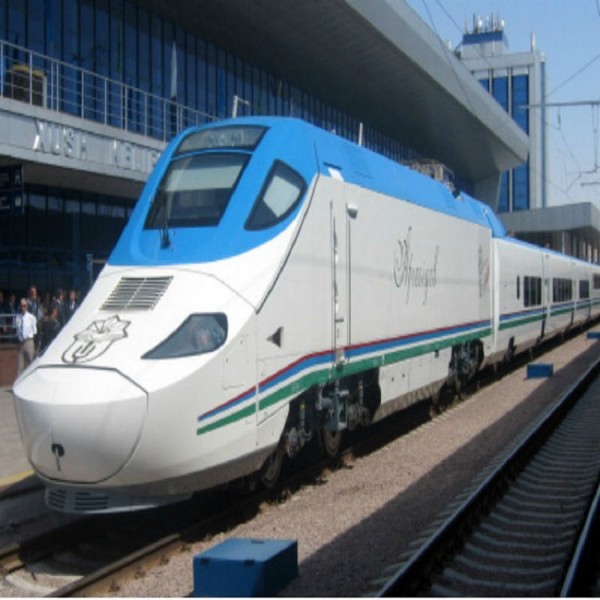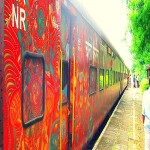Itinerary -
Day 1 - Delhi
Board the Train in the evening. Train leaves at 19:30hrs. Dinner on board and train departs for Agra.
Day 2 - Agra
After Breakfast on board disembark, and proceed to visit Agra Fort and Taj Mahal. Lunch at City hotel. Then visit Fatehpur Sikri and board the Train at Bharatpur Railway Station. Train leaves for Jaipur while dinner is served on board.
Day 3 - Jaipur
Morning excursion to Amber Fort, Observatory and Hawa Mahal. Lunch at the Jai Mahal Palace hotel. Evening visit City Palace followed by Gala Dinner at the Palace. The Train proceeds towards Sawai Madhopur at night.
Day 4 - Sawai Madhopur
After early breakfast enjoy jungle safari by canter. Lunch on board followed by afternoon safari. High-Tea at The Taj Lodge. Dinner on board as the Train leaves for Udaipur.
Day 5 - Udaipur
Morning sightseeing of Udaipur city followed by boat rides on lake Pichola (subject to water levels). Return to Train for Lunch on board. Rest of the day at leisure. The Train travels to Aurangabad in the afternoon.
Day 6 - Aurangabad , Visit Ellora Caves
Morning at leisure after breakfast on board. Early lunch on board / packed lunch as we drive to Ellora. After sightseeing of Ellora Caves, drive back to Jalgaon in the evening to board the train. Dinner on board.
Day 7 - Aurangabad , Visit Ajanta Caves
Morning de-board the Train for an excursion to Ajanta Caves. Return to Train for Lunch on board. The rest of the day free on board as the train leaves for Mumbai. Dinner on board.
Day 8 - Mumbai
After Breakfast, check-out and de-board the Train at Railway Station in Mumbai.
Trip Ends With Sweet Memories !!!
Ellora Temple Caves
The cave temples of Ellora were excavated from the solid rock and symbolizes the three faiths of Hinduism, Buddhism and Jainism. Carved during the 350 AD to 700 AD period, these finest examples of cave - temple architecture houses detailed facades and exceptionally carved interiors.
The caves opening to the west are equally associated to Buddhism, Hinduism, and Jainism. Out of total 34 caves, 12 caves to the south are Buddhist, the 17 in the centre dedicated to Hinduism, and the 5 caves to the north are dedicated to Jainism.
From south to north there are about 34 caves here, which corresponds more or less (Cave 21 with some significant exceptions) to the order in which they were constructed. The caves 1 to 12 in southernmost direction, are dedicated to Buddhism and were built in & around 7th & 8th centuries AD. The middle caves 13 to 29 are dedicated to Hindu deities, which dates back from 7th century to 9th century AD. The upper caves are related to Jainism (9th century).
Ajanta Caves
These 3rd-century caves are fine achievements by Buddhist monks and are considered the finest masterpiece of Buddhist art and architecture.The caves are cut from the volcanic lava of the Deccan and are set in beautiful blooming surroundings. These historical manmade caves comprise of beautiful paintings on the walls and ceilings that depict the life of the Buddha. At Ajanta, the paintings on the walls, illustrate the events in the life of Gautama Buddha.
City Palace
Udaipur City Palace is one of the architectural marvels of Rajasthan, located peacefully on the banks of Lake Pichola. This majestic City Palace is the most-visited tourist attraction of Udaipur and often distinguished as the largest palace complex in Rajasthan. Initially, Maharana Udai Singh built this superb wonder, but the present form of the Palace is the result of subsequent additions by his successors. City Palace boasts of the wonderful blend of Medieval, European and Chinese Architecture. The Palace has various towers, domes and arches, which add to the flavor of heritage site. Towering on the banks of Pichola Lake, City Palace is truly a feast to the eyes. City Palace is a marvelous assortment of courtyards, pavilions, terraces, corridors, rooms and hanging gardens. Encircled by fortifications, this imposing Palace is wholly built in granite and marble.
Amber Fort
Amber is located at a distance of 11 kilometers from Jaipur and was the old fort of the Kachhwaha clan of Amber, which used to be the capital, till it was moved to Jaipur.
The construction of the Amber Fort began in the year 1592 and was started by Man Singh I, but it was finished by his descendant Jai Singh I. The exterior of the Fort is not in the least like its interiors. The outside is very imposing and rugged looking whereas the inside is a comforting and warm interior which is influenced by both Hindu and Muslim style of ornamentation. On the walls, are paintings depicting various hunting scenes, and there is also a lot of work on walls, which are covered with intricate carving, mosaic and minute mirror work that make the halls look very majestic and imperial.
The fort is built with white marble and red sandstone and look even more attractive because of the Maota Lake in the foreground. The fort in itself is a beautiful sight to behold but as one looks on the fort with its clear reflection on the lake in the front, one cannot help but wonder if it is a dream or a beautiful illusion.
Taj Mahal
Taj Mahal is regarded as one of the eight wonders of the world, and some Western historians have noted that its architectural beauty has never been surpassed. The Taj is the most beautiful monument built by the Mughals, the Muslim rulers of India. Taj Mahal is built entirely of white marble. Its stunning architectural beauty is beyond adequate description, particularly at dawn and sunset. The Taj seems to glow in the light of the full moon. On a foggy morning, the visitors experience the Taj as if suspended when viewed from across the Jamuna river.
Taj Mahal was built by a Muslim, Emperor Shah Jahan (died 1666 C.E.) in the memory of his dear wife and queen Mumtaz Mahal at Agra, India. It is an "elegy in marble" or some say an expression of a "dream." Taj Mahal (meaning Crown Palace) is a Mausoleum that houses the grave of queen Mumtaz Mahal at the lower chamber. The grave of Shah Jahan was added to it later. The queen's real name was Arjumand Banu. In the tradition of the Mughals, important ladies of the royal family were given another name at their marriage or at some other significant event in their lives, and that new name was commonly used by the public. Shah Jahan's real name was Shahab-ud-din, and he was known as Prince Khurram before ascending to the throne in 1628.
About The Tour
Epitomizing the art of elegant travelling, The Indian Maharaja - Deccan Odyssey Luxury Train traverses through a land of the great Marathas. The train route makes the guests travel to the many exotic destinations of Maharashtra and North India. The lavish cabins, amazing cuisines and great sites make your odyssey as one of the most outstanding luxury train holidays. The trip reminds you of the royalty of the bygone epoch along with allowing the guests to take pleasure of the gracious services. We at Namoh provide The Indian Maharaja - Deccan Odyssey booking that makes you slip into the lap of ultimate luxury and pampering.
The Indian Maharaja
As the wind whispers through the halo of legends crowning the land of the mighty Marathas, a lone majestic whistle blows its salutation of honour as it gracefully traverses this land of fantastic fantasy.
Welcome to the mesmerizing Maharashtra experience aboard the luxurious The Indian Maharaja - Deccan Odyssey. The weeklong The Indian Maharaja - Deccan Odyssey tour includes several exotic destinations covering the vast expanse of Maharashtra and North India. Covering Mumbai, Aurangabad, Udaipur, Sawai Modhopur, Jaipur, Agra and Delhi









